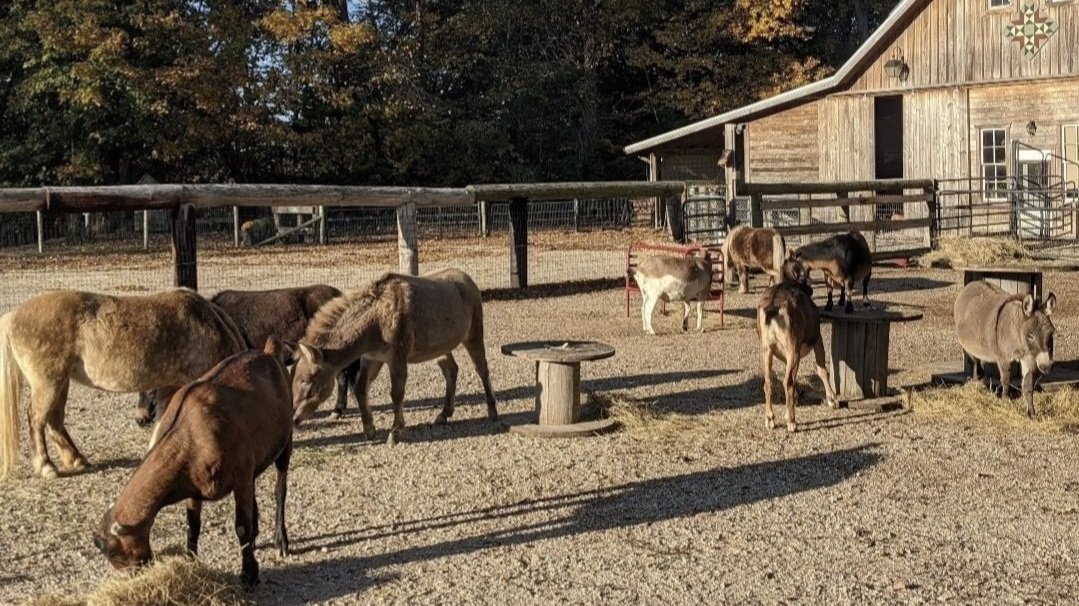
FAQs
-
First and foremost, the health and well being of our current rescues and residents is the most important. Because of this, we are unable at this time to accept any pigs, cattle, or large horses.
We do have a few slots available for goats, sheep, llama/alpaca, and some poultry. When space becomes available, we will let people know.
Our goal is to find perfect homes for those healthy, younger animals.
We do have a long list of resources to help with animals in need, and we are happy to provide information, work with other organizations, and do what’s best in the interest of each animal.
-
Many donkeys, mules, ponies and miniature horses have evolved to survive and thrive on low quality hay. However, many are fed a diet that consists of ‘sweet feed’ or allowed access to lush pastures. As a result, they can develop Equine Metabolic Syndrome. EMS is the result of over feeding carbohydrates, which turn into sugars. The pancreas then has to work extra hard to produce high levels of insulin. Long term exposure to such high levels of insulin causes the tissue to become insulin resistant. In many cases, EMS is like Type 2 diabetes in humans.
Once the tissue becomes insulin resistant, this is when fat deposits will occur. Found most commonly along the neck (called Cresty neck, broken crest, or fat roll), fat deposits can also occur down the back of the animal, and along the top of the tail. Once these fat deposits occur, they will never go away. Most of the rescues that arrive at WoodHaven Rescue already have signs of EMS.
Fat deposits caused by EMS are mostly aesthetic issues, although the weight of large neck crests can be uncomfortable. The bigger danger is what happens in the hooves of these animals. Laminitis is the horribly painful condition where the tissue lining between the hoof and the bone is inflamed and damaged. In severe cases, laminitis can progress to a condition called founder, where the hoof is separated from the foot bone (called coffin bone), and the bone then rotates. In humans, this would be similar if our foot rotated where instead of walking on the bottom of our foot, our foot would be turned upside down and we would have to walk on the top. It is extremely painful, and irreversible. Once foundered, the only treatment is pain management and supportive care.
Anti inflammatory medications are used for pain relief and to control inflammation and opiates may be given in more serious cases. Stall rest on rubber mats and in deep bedding helps, and in severe cases, sling support to allow for upright posture without weight on the hooves.
How do we help prevent laminitis? We use dry lots to keep these animals off of pasture, and thereby minimize sugars and carbohydrates by feeding quality dry grass hay. We schedule regular farrier visits to ensure hooves are properly trimmed and balanced. And we strive to keep our animals at a healthy weight, as overweight horses are more likely to develop laminitis.
